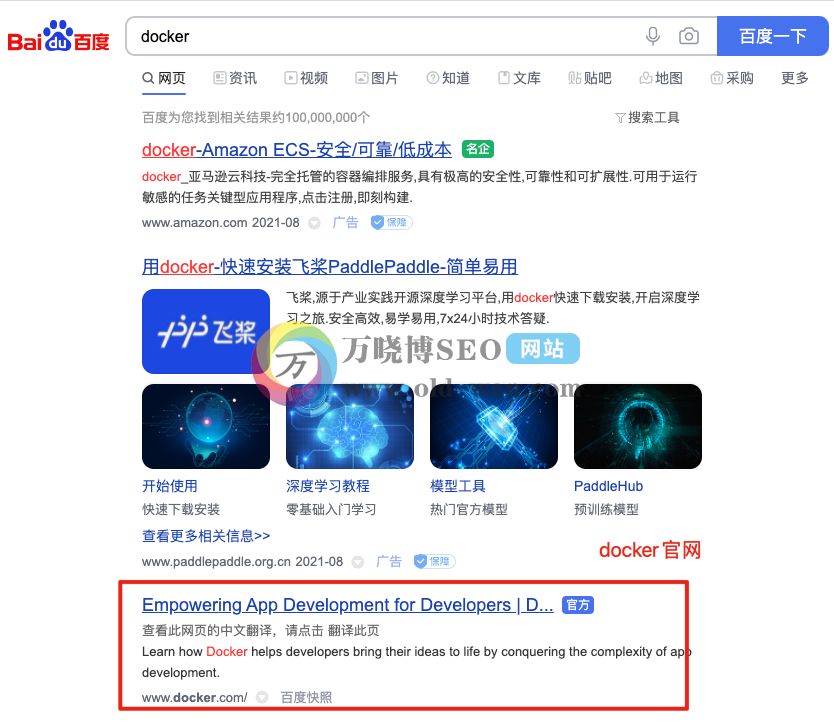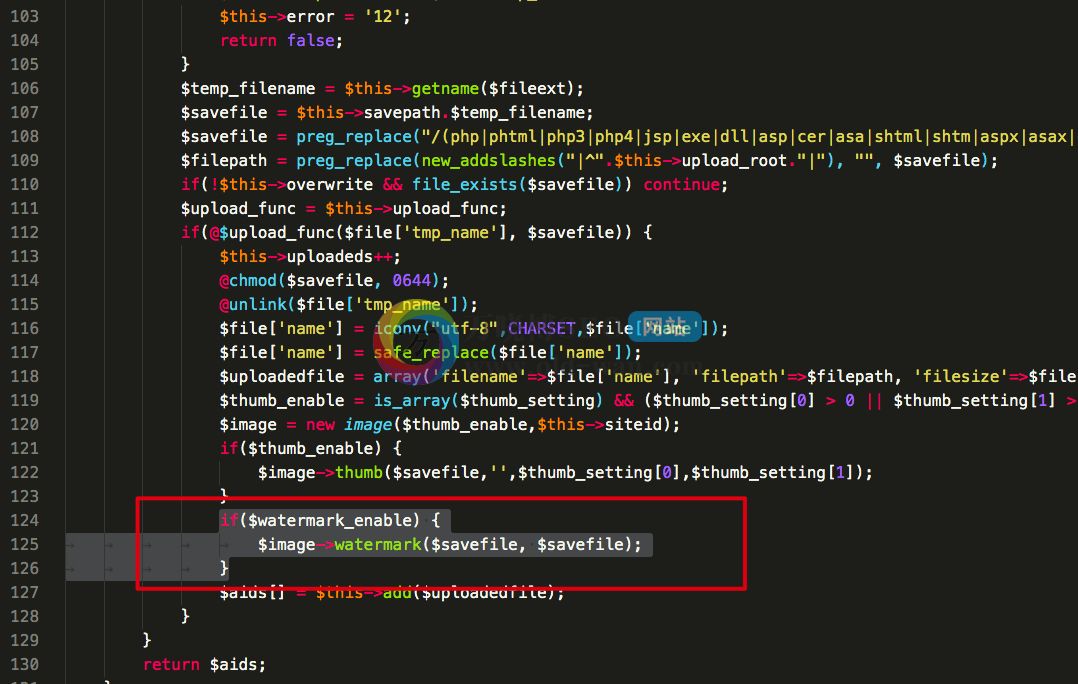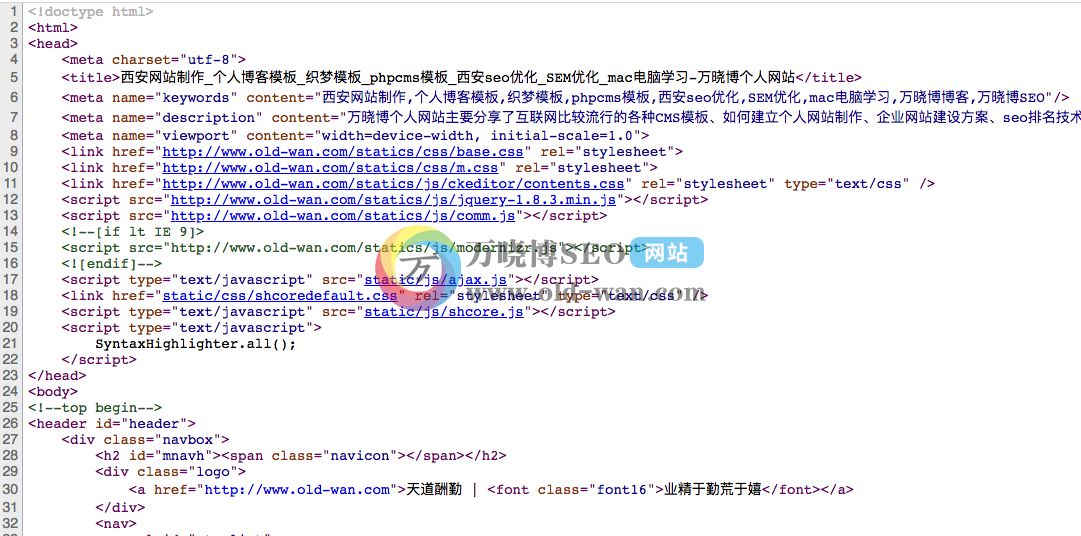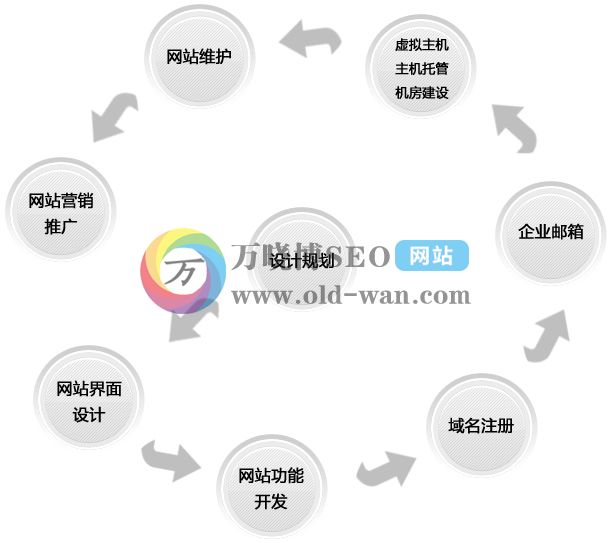您现在的位置是:首页 > 编程语言学习 > 前端编程语言 > 文章正文 前端编程语言
SpringBoot和Vue.js实现的前后端分离的用户权限管理系统
![]() 2023-04-03 17:50:37
前端编程语言
2023-04-03 17:50:37
前端编程语言
简介后端实现1. 数据库设计我们需要设计两个表:用户表和角色表。用户表字段类型描述idbigint(20)用户IDusernamevarchar(50)用户名passwordvar...
后端实现
1. 数据库设计
我们需要设计两个表:用户表和角色表。
用户表
- 字段 类型 描述
- id bigint(20) 用户 ID
- username varchar(50) 用户名
- password varchar(255) 密码
- email varchar(50) 邮箱
- phone varchar(20) 手机号码
- create_by varchar(50) 创建人
- create_time datetime 创建时间
- update_by varchar(50) 最后修改人
- update_time datetime 最后修改时间
- status tinyint(1) 用户状态
角色表
- 字段 类型 描述
- id bigint(20) 角色 ID
- role_name varchar(50) 角色名称
- create_by varchar(50) 创建人
- create_time datetime 创建时间
- update_by varchar(50) 最后修改人
- update_time datetime 最后修改时间
- status tinyint(1) 角色状态
用户角色表
- 字段 类型 描述
- id bigint(20) ID
- user_id bigint(20) 用户 ID
- role_id bigint(20) 角色 ID
- create_by varchar(50) 创建人
- create_time datetime 创建时间
- update_by varchar(50) 最后修改人
- update_time datetime 最后修改时间
- status tinyint(1) 状态
2. 创建 Maven 项目
使用 Maven 创建 Spring Boot 项目,引入 Spring Boot Web、Spring Boot JPA、MySQL 和 Lombok 等依赖。可以使用以下命令创建 Maven 项目:
- mvn archetype:generate -DgroupId=com.example -DartifactId=user-management -DarchetypeArtifactId=maven-archetype-quickstart -DinteractiveMode=false
3. 配置数据库
在 application.properties 文件中添加以下配置:
- spring.datasource.url=jdbc:mysql://localhost:3306/user_management?useUnicode=true&characterEncoding=UTF-8&serverTimezone=Asia/Shanghai
- spring.datasource.username=root
- spring.datasource.password=root
- spring.datasource.driver-class-name=com.mysql.cj.jdbc.Driver
- spring.jpa.hibernate.ddl-auto=update
- spring.jpa.properties.hibernate.show_sql=true
- spring.jpa.properties.hibernate.format_sql=true
- spring.jpa.properties.hibernate.use_sql_comments=true
4. 创建实体类
创建 User、Role 和 UserRole 实体类,使用 Lombok 注解简化代码。具体代码如下:
User.java
- @Data
- @Entity
- @Table(name = "user")
- public class User {
- @Id
- @GeneratedValue(strategy = GenerationType.IDENTITY)
- private Long id
- User.java(续)
- java
- Copy code
- private String username;
- private String password;
- private String email;
- private String phone;
- private String createBy;
- private Date createTime;
- private String updateBy;
- private Date updateTime;
- private Boolean status;
- }
Role.java
- @Data
- @Entity
- @Table(name = "role")
- public class Role {
- @Id
- @GeneratedValue(strategy = GenerationType.IDENTITY)
- private Long id;
- private String roleName;
- private String createBy;
- private Date createTime;
- private String updateBy;
- private Date updateTime;
- private Boolean status;
- }
UserRole.java
- @Data
- @Entity
- @Table(name = "user_role")
- public class UserRole {
- @Id
- @GeneratedValue(strategy = GenerationType.IDENTITY)
- private Long id;
- private Long userId;
- private Long roleId;
- private String createBy;
- private Date createTime;
- private String updateBy;
- private Date updateTime;
- private Boolean status;
- }
5. 创建 Repository
创建 UserRepository、RoleRepository 和 UserRoleRepository,用于操作数据库。
UserRepository.java
- @Repository
- public interface UserRepository extends JpaRepository<User, Long> {
- User findByUsername(String username);
- }
- RoleRepository.java
- java
- Copy code
- @Repository
- public interface RoleRepository extends JpaRepository<Role, Long> {
- }
- UserRoleRepository.java
- java
- Copy code
- @Repository
- public interface UserRoleRepository extends JpaRepository<UserRole, Long> {
- List<UserRole> findByUserId(Long userId);
- }
6. 创建 Service
创建 UserService、RoleService 和 UserRoleService,用于处理业务逻辑。
UserService.java
- @Service
- public class UserService {
- @Autowired
- private UserRepository userRepository;
- @Autowired
- private UserRoleRepository userRoleRepository;
- public User findByUsername(String username) {
- return userRepository.findByUsername(username);
- }
- public List<UserRole> findUserRolesByUserId(Long userId) {
- return userRoleRepository.findByUserId(userId);
- }
- }
RoleService.java
- @Service
- public class RoleService {
- @Autowired
- private RoleRepository roleRepository;
- }
- UserRoleService.java
- java
- Copy code
- @Service
- public class UserRoleService {
- @Autowired
- private UserRoleRepository userRoleRepository;
- }
7. 创建 Controller
创建 UserController、RoleController 和 UserRoleController,用于处理请求。
UserController.java
- @RestController
- @RequestMapping("/api/user")
- public class UserController {
- @Autowired
- private UserService userService;
- @GetMapping("/{username}")
- public User findByUsername(@PathVariable String username) {
- return userService.findByUsername(username);
- }
- @GetMapping("/{userId}/roles")
- public List<UserRole> findUserRolesByUserId(@PathVariable Long userId) {
- return userService.findUserRolesByUserId(userId);
- }
- }
RoleController.java
- @RestController
- @RequestMapping("/api/role")
- public class RoleController {
- @Autowired
- private RoleService roleService;
- @GetMapping("")
- public List<Role> findAll() {
- return roleService.findAll();
- }
- }
UserRoleController.java
- @RestController
- @RequestMapping("/api/userRole")
- public class UserRoleController {
- @Autowired
- private UserRoleService userRoleService;
- }
8. 启动应用
使用 Maven 命令 mvn spring-boot:run 启动应用,或者直接运行 UserManagementApplication 类。
9. 完整的SecurityConfig.java:
- @Configuration
- @EnableWebSecurity
- public class SecurityConfig extends WebSecurityConfigurerAdapter {
- @Autowired
- private UserDetailsServiceImpl userDetailsService;
- @Autowired
- private JwtAuthenticationEntryPoint unauthorizedHandler;
- @Bean
- public JwtAuthenticationFilter jwtAuthenticationFilter() {
- return new JwtAuthenticationFilter();
- }
- @Override
- public void configure(AuthenticationManagerBuilder authenticationManagerBuilder) throws Exception {
- authenticationManagerBuilder
- .userDetailsService(userDetailsService)
- .passwordEncoder(passwordEncoder());
- }
- @Bean(BeanIds.AUTHENTICATION_MANAGER)
- @Override
- public AuthenticationManager authenticationManagerBean() throws Exception {
- return super.authenticationManagerBean();
- }
- @Bean
- public PasswordEncoder passwordEncoder() {
- return new BCryptPasswordEncoder();
- }
- @Override
- protected void configure(HttpSecurity http) throws Exception {
- http
- .cors()
- .and()
- .csrf()
- .disable()
- .exceptionHandling()
- .authenticationEntryPoint(unauthorizedHandler)
- .and()
- .sessionManagement()
- .sessionCreationPolicy(SessionCreationPolicy.STATELESS)
- .and()
- .authorizeRequests()
- .antMatchers("/api/auth/**")
- .permitAll()
- .anyRequest()
- .authenticated();
- http.addFilterBefore(jwtAuthenticationFilter(), UsernamePasswordAuthenticationFilter.class);
- }
- }
其中,JwtAuthenticationFilter是前面提到的JWT认证过滤器,UserDetailsServiceImpl是实现了Spring Security的UserDetailsService接口的用户服务类,JwtAuthenticationEntryPoint是未经授权时抛出的异常处理程序。配置类中的configure方法配置了授权规则,访问“/api/auth/**”路径下的接口不需要认证即可访问,其他所有请求都需要认证后才能访问。同时,我们也添加了JWT认证过滤器。
前端实现
1. 创建 Vue.js 项目
使用 Vue CLI 创建项目:
- vue create user-management
2. 添加依赖
在 package.json 中添加以下依赖:
- {
- "dependencies": {
- "axios": "^0.21.1",
- "element-plus": "^1.0.2-beta.55",
- "vue": "^2.6.12",
- "vue-router": "^3.5.1"
- }
- }
然后执行 npm install 安装依赖。
3. 配置 Axios
在 src/main.js 中添加以下代码:
- import axios from 'axios'
- axios.defaults.baseURL = 'http://localhost:8080/api'
- Vue.prototype.$http = axios
4. 创建路由
在 src/router/index.js 中添加以下代码:
- import Vue from 'vue'
- import VueRouter from 'vue-router'
- import Home from '../views/Home.vue'
- import Login from '../views/Login.vue'
- Vue.use(VueRouter)
- const routes = [
- {
- path: '/',
- name: 'Home',
- component: Home
- },
- {
- path: '/login',
- name: 'Login',
- component: Login
- }
- ]
- const router = new VueRouter({
- mode: 'history',
- base: process.env.BASE_URL,
- routes
- })
- export default router
5. 创建页面
在 src/views 目录下创建以下页面:
Home.vue
- <template>
- <div>
- <h1>用户管理</h1>
- <table>
- <thead>
- <tr>
- <th>用户名</th>
- <th>邮箱</th>
- <th>手机号码</th>
- <th>操作</th>
- </tr>
- </thead>
- <tbody>
- <tr v-for="user in users" :key="user.id">
- <td>{{ user.username }}</td>
- <td>{{ user.email }}</td>
- <td>{{ user.phone }}</td>
- <td>
- <button @click="editUser(user)">编辑</button>
- <button @click="deleteUser(user)">删除</button>
- </td>
- </tr>
- </tbody>
- </table>
- </div>
- </template>
- <script>
- export default {
- name: 'Home',
- data() {
- return {
- users: []
- }
- },
- mounted() {
- this.loadUsers()
- },
- methods: {
- loadUsers() {
- this.$http.get('/user')
- .then(response => {
- this.users = response.data
- })
- .catch(error => {
- console.log(error)
- })
- },
- editUser(user) {
- console.log(user)
- },
- deleteUser(user) {
- console.log(user)
- }
- }
- }
- </script>
Login.vue
- <template>
- <div>
- <h1>登录</h1>
- <form @submit.prevent="login">
- <div>
- <label>用户名:</label>
- <input type="text" v-model="username" />
- </div>
- <div>
- <label>密码:</label>
- <input type="password" v-model="password" />
- </div>
- <button type="submit">登录</button>
- </form>
- </div>
- </template>
- <script>
- export default {
- name: 'Login',
- data() {
- return {
- username: '',
- password: ''
- }
- },
- methods: {
- login() {
- const params = {
- username: this.username,
- password: this.password
- }
- this.$http.post('/login', params)
- .then(response => {
- console.log(response)
- })
- .catch(error => {
- console.log(error)
- })
- }
- }
- }
- </script>
6. 添加 Element UI 组件
在 src/main.js 中添加以下代码:
- import ElementPlus from 'element-plus'
- import 'element-plus/dist/index.css'
- Vue.use(ElementPlus)
7. 运行项目
在项目根目录下执行以下命令运行项目:
- npm run serve
然后在浏览器中访问 http://localhost:8080 查看效果。
以上代码只是简单地实现了用户列表的显示以及登录功能的实现,还需要进一步完善和优化。同时,还需要在后端实现相应的接口。
8. 添加路由
在 src/router/index.js 中添加以下代码:
- import Vue from 'vue'
- import VueRouter from 'vue-router'
- import Login from '../views/Login.vue'
- import UserList from '../views/UserList.vue'
- Vue.use(VueRouter)
- const routes = [
- {
- path: '/',
- redirect: '/login'
- },
- {
- path: '/login',
- name: 'Login',
- component: Login
- },
- {
- path: '/userlist',
- name: 'UserList',
- component: UserList,
- meta: {
- requireAuth: true
- }
- }
- ]
- const router = new VueRouter({
- mode: 'history',
- base: process.env.BASE_URL,
- routes
- })
- export default router
其中,meta 属性中的 requireAuth 表示该路由需要登录才能访问。
9. 添加登录拦截
在 src/main.js 中添加以下代码:
- router.beforeEach((to, from, next) => {
- if (to.meta.requireAuth && !localStorage.getItem('token')) {
- next({
- path: '/login',
- query: { redirect: to.fullPath }
- })
- } else {
- next()
- }
- })
这段代码的作用是,在用户访问需要登录才能访问的路由时,检查用户是否已登录。如果用户未登录,则跳转到登录页面,并将目标路由的路径保存到查询参数中,以便用户登录成功后自动跳转到目标路由。
10. 添加用户服务
在 src/services 目录下创建 UserService.js 文件,并添加以下代码:
- import axios from 'axios'
- const API_URL = '/api/users/'
- class UserService {
- getUsers () {
- return axios.get(API_URL)
- }
- getUser (id) {
- return axios.get(API_URL + id)
- }
- createUser (data) {
- return axios.post(API_URL, data)
- }
- updateUser (id, data) {
- return axios.put(API_URL + id, data)
- }
- deleteUser (id) {
- return axios.delete(API_URL + id)
- }
- }
- export default new UserService()
该文件定义了一个 UserService 类,用于向后端发送请求,获取用户数据。其中,API_URL 表示后端 API 的根路径,getUsers、getUser、createUser、updateUser 和 deleteUser 方法分别对应获取用户列表、获取单个用户、创建用户、更新用户和删除用户。
11. 添加用户列表页面
在 src/views 目录下创建 UserList.vue 文件,并添加以下代码:
- <template>
- <div>
- <h1>用户列表</h1>
- <div class="mb-3">
- <router-link to="/user/add" class="btn btn-primary">添加用户</router-link>
- </div>
- <table class="table table-striped">
- <thead>
- <tr>
- <th>用户名</th>
- <th>邮箱</th>
- <th>角色</th>
- <th>操作</th>
- </tr>
- </thead>
- <tbody>
- <tr v-for="user in userList" :key="user.id">
- <td>{{ user.username }}</td>
- <td>{{ user.email }}</td>
- <td>{{ user.roles.map(role => role.name).join(', ') }}</td>
- <td>
- <router-link :to="'/user/edit/' + user.id" class="btn btn-primary">编辑</router-link>
- <button class="btn btn-danger" @click="deleteUser(user.id)">删除</button>
- </td>
- </tr>
- </tbody>
- </table>
- </div>
- </template>
- <script>
- import axios from "axios";
- export default {
- data() {
- return {
- userList: [],
- };
- },
- methods: {
- fetchUserList() {
- axios.get("/api/private/users").then((response) => {
- this.userList = response.data;
- });
- },
- deleteUser(id) {
- if (confirm("确定删除该用户吗?")) {
- axios.delete(`/api/private/users/${id}`).then(() => {
- this.fetchUserList();
- });
- }
- },
- },
- mounted() {
- this.fetchUserList();
- },
- };
- </script>
这个文件中,我们使用了vue-router和axios库。在fetchUserList方法中,我们使用axios库发起了一个GET请求来获取用户列表。在deleteUser方法中,我们使用axios库发起了一个DELETE请求来删除用户。
接下来我们将完成系统的权限控制部分。在Spring Security中,权限控制通常通过定义安全配置类来实现。
首先,我们需要创建一个实现了WebSecurityConfigurer接口的安全配置类SecurityConfig。在这个类中,我们可以配置用户认证和授权规则。
- @Configuration
- @EnableWebSecurity
- public class SecurityConfig extends WebSecurityConfigurerAdapter {
- @Autowired
- private UserDetailsService userDetailsService;
- @Override
- protected void configure(HttpSecurity http) throws Exception {
- http.csrf().disable()
- .authorizeRequests()
- .antMatchers("/api/public/**").permitAll()
- .antMatchers("/api/private/**").authenticated()
- .and().formLogin()
- .loginPage("/login")
- .permitAll()
- .defaultSuccessUrl("/")
- .and().logout().logoutUrl("/logout").logoutSuccessUrl("/login").invalidateHttpSession(true);
- }
- @Override
- protected void configure(AuthenticationManagerBuilder auth) throws Exception {
- auth.userDetailsService(userDetailsService).passwordEncoder(passwordEncoder());
- }
- @Bean
- public PasswordEncoder passwordEncoder() {
- return new BCryptPasswordEncoder();
- }
- }
在上述代码中,我们配置了以下规则:
所有以/api/public开头的请求都不需要认证即可访问。 所有以/api/private开头的请求都需要认证才能访问。 登录页面为/login,登录成功后默认跳转到根路径/。 注销路径为/logout,注销成功后跳转到登录页面。 在AuthenticationManagerBuilder中指定了用户认证服务和密码加密方式。 为了实现用户认证,我们需要创建一个实现了UserDetailsService接口的用户认证服务。UserDetailsService是一个Spring Security的核心接口,用于查询用户信息。我们可以通过重写该接口的loadUserByUsername方法来实现自定义的用户认证逻辑。
- @Service
- public class UserDetailsServiceImpl implements UserDetailsService {
- @Autowired
- private UserRepository userRepository;
- @Override
- public UserDetails loadUserByUsername(String username) throws UsernameNotFoundException {
- User user = userRepository.findByUsername(username);
- if (user == null) {
- throw new UsernameNotFoundException("用户不存在");
- }
- List<SimpleGrantedAuthority> authorities = user.getRoles().stream()
- .map(role -> new SimpleGrantedAuthority(role.getName()))
- .collect(Collectors.toList());
- return new org.springframework.security.core.userdetails.User(user.getUsername(), user.getPassword(),
- authorities);
- }
- }
在上述代码中,我们通过注入UserRepository来查询用户信息。然后,我们将查询到的用户角色信息转换为Spring Security的授权信息,并返回一个UserDetails对象。
至此,我们已经完成了用户认证和权限控制的实现。通过这个系统,我们可以实现用户登录、注销和权限控制等基础功能。
12. 完整的AddUser.vue组件代码:
- <template>
- <div>
- <h2>Add User</h2>
- <form>
- <div class="form-group">
- <label for="username">Username</label>
- <input type="text" class="form-control" id="username" v-model="user.username" required>
- </div>
- <div class="form-group">
- <label for="email">Email</label>
- <input type="email" class="form-control" id="email" v-model="user.email" required>
- </div>
- <div class="form-group">
- <label for="password">Password</label>
- <input type="password" class="form-control" id="password" v-model="user.password" required>
- </div>
- <div class="form-group">
- <label for="roles">Roles</label>
- <select multiple class="form-control" id="roles" v-model="user.roles">
- <option v-for="role in roles" :key="role.id" :value="role">{{ role.name }}</option>
- </select>
- </div>
- <button type="button" class="btn btn-primary" @click="addUser">Add User</button>
- </form>
- </div>
- </template>
- <script>
- import axios from 'axios';
- export default {
- name: 'AddUser',
- data() {
- return {
- user: {
- username: '',
- email: '',
- password: '',
- roles: []
- },
- roles: []
- }
- },
- created() {
- axios.get('/api/roles')
- .then(response => {
- this.roles = response.data;
- })
- .catch(error => {
- console.log(error);
- });
- },
- methods: {
- addUser() {
- axios.post('/api/users', this.user)
- .then(response => {
- this.$router.push({ name: 'UserList' });
- })
- .catch(error => {
- console.log(error);
- });
- }
- }
- }
- </script>
- <style scoped>
- .form-group {
- margin-bottom: 1rem;
- }
- </style>
在这个组件中,我们使用了Bootstrap的样式来美化表单。我们从后端获取了所有的角色列表,将其渲染到了下拉列表中。同时,我们绑定了一个addUser方法,在点击“Add User”按钮时将用户信息提交到后端创建一个新用户。
13. 完整的UserForm.vue组件代码:
- <template>
- <div>
- <form>
- <div class="form-group">
- <label for="username">Username</label>
- <input type="text" class="form-control" id="username" v-model="user.username" required>
- </div>
- <div class="form-group">
- <label for="email">Email</label>
- <input type="email" class="form-control" id="email" v-model="user.email" required>
- </div>
- <div class="form-group">
- <label for="password">Password</label>
- <input type="password" class="form-control" id="password" v-model="user.password" required>
- </div>
- <div class="form-group">
- <label for="roles">Roles</label>
- <select multiple class="form-control" id="roles" v-model="user.roles">
- <option v-for="role in roles" :key="role.id" :value="role">{{ role.name }}</option>
- </select>
- </div>
- <button type="button" class="btn btn-primary" @click="submitForm">{{ submitButtonLabel }}</button>
- </form>
- </div>
- </template>
- <script>
- import axios from 'axios';
- export default {
- name: 'UserForm',
- props: {
- user: {
- type: Object,
- default: () => {
- return {
- username: '',
- email: '',
- password: '',
- roles: []
- };
- }
- },
- roles: {
- type: Array,
- default: () => {
- return [];
- }
- },
- submitButtonLabel: {
- type: String,
- default: 'Submit'
- },
- onSubmit: {
- type: Function,
- default: () => {
- console.log('Submit function not provided');
- }
- }
- },
- methods: {
- submitForm() {
- this.onSubmit(this.user);
- }
- }
- }
- </script>
- <style scoped>
- .form-group {
- margin-bottom: 1rem;
- }
- </style>
在这个组件中,我们使用了Bootstrap的样式来美化表单。我们从父组件中传递了一个user对象、roles数组和submitButtonLabel属性,分别用于渲染表单元素和提交按钮。同时,我们使用了props属性来声明这些属性。最后,我们绑定了一个submitForm方法,在点击提交按钮时将用户信息传递给父组件的onSubmit方法处理。
上一篇:Vue组件渲染与更新实现过程浅析
下一篇:最后一页







